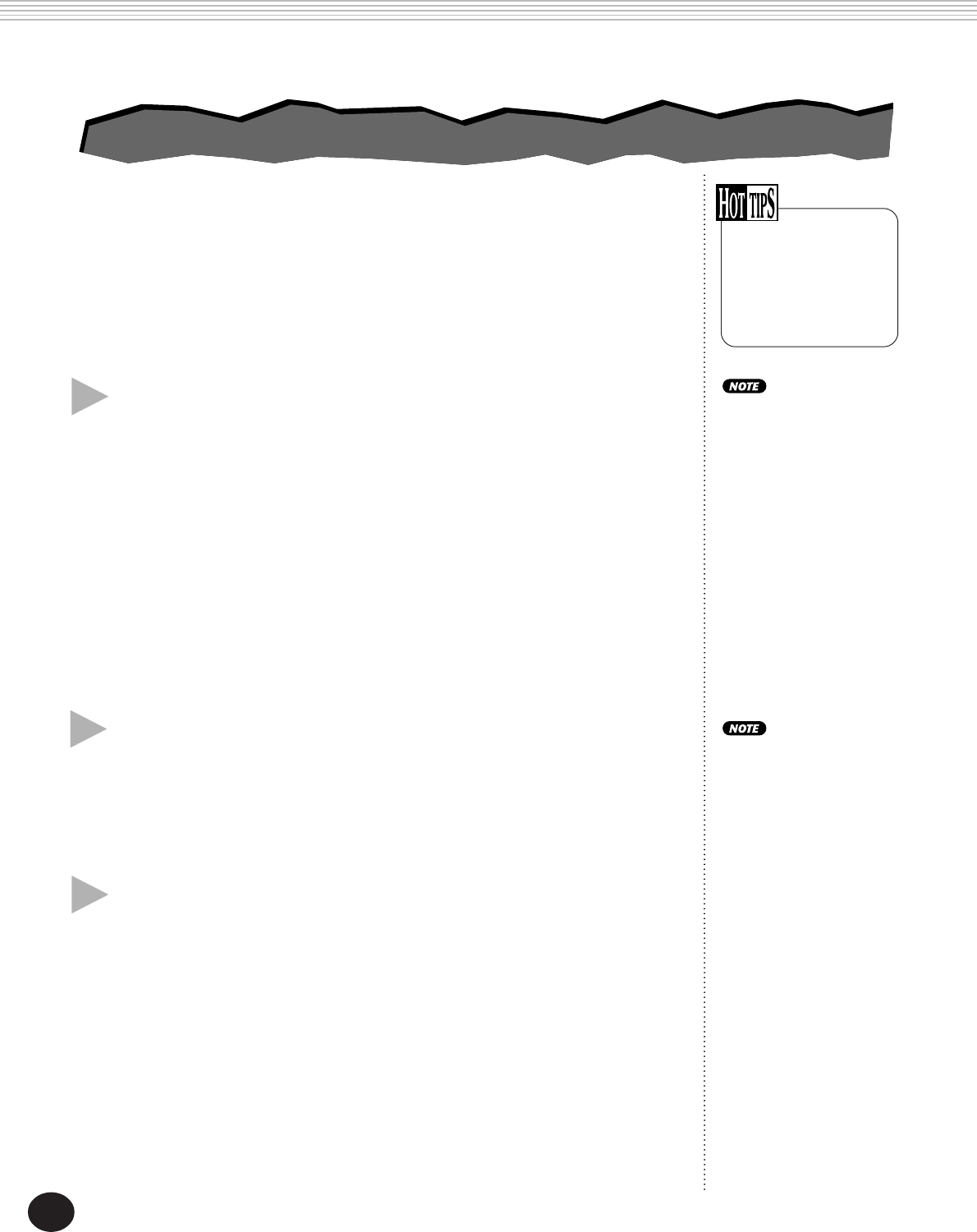
36
The DSP effect section provides many reverb and chorus effects, plus a
wealth of other useful and dynamic effects for enhancing and changing the
sound of the voices. Included among these miscellaneous effects are
reverse gate reverb, phaser, rotary speaker, tremolo, echo, delay, distortion,
equalization, and wah. A total of thirty-three DSP types are available.
1 Turn on the DSP effect (#35) and set the DSP Type
(#36) in the Function mode.
Selecting and changing the Function parameters:
Press the FUNCTION button, then use the numeric keypad to select the
parameter number. After “FUNCTION” stops flashing, use the numeric
keypad or +/- buttons to change the setting. (For details, see page 18.)
For a list of the DSP Types, see page 39.
• The DSP effect is applied
only to the keyboard-played
voices.
• These settings are not
saved when you turn off the
power. If you wish to save
them, save them to a User
bank in the Performance
Setup feature (page 56).
• Eighteen additional DSP
Types are available when
controlling the DJX from a
MIDI device. (For details,
see page 114.)
3 Exit the Function mode.
Once you’ve made all desired settings, press one of the other mode but-
tons (SONG, STYLE, or VOICE).
The DSP effect can
also be turned on and
off with a connected
footswitch. (See page
21.)
EFFECTS
2 Set the DSP Send Level for the desired voice(s).
The Main, Dual, and Split voices can each be set to have different amounts
of DSP. Use the corresponding DSP Send Level parameters in the Function
mode (Main: #06, Dual: #16, Split: #26) to control this. (See pages 27, 30,
32.)
If the DSP Send Level is set
to a value near or at “000,”
the DSP effect may not be
heard.
DSP
DSP


















